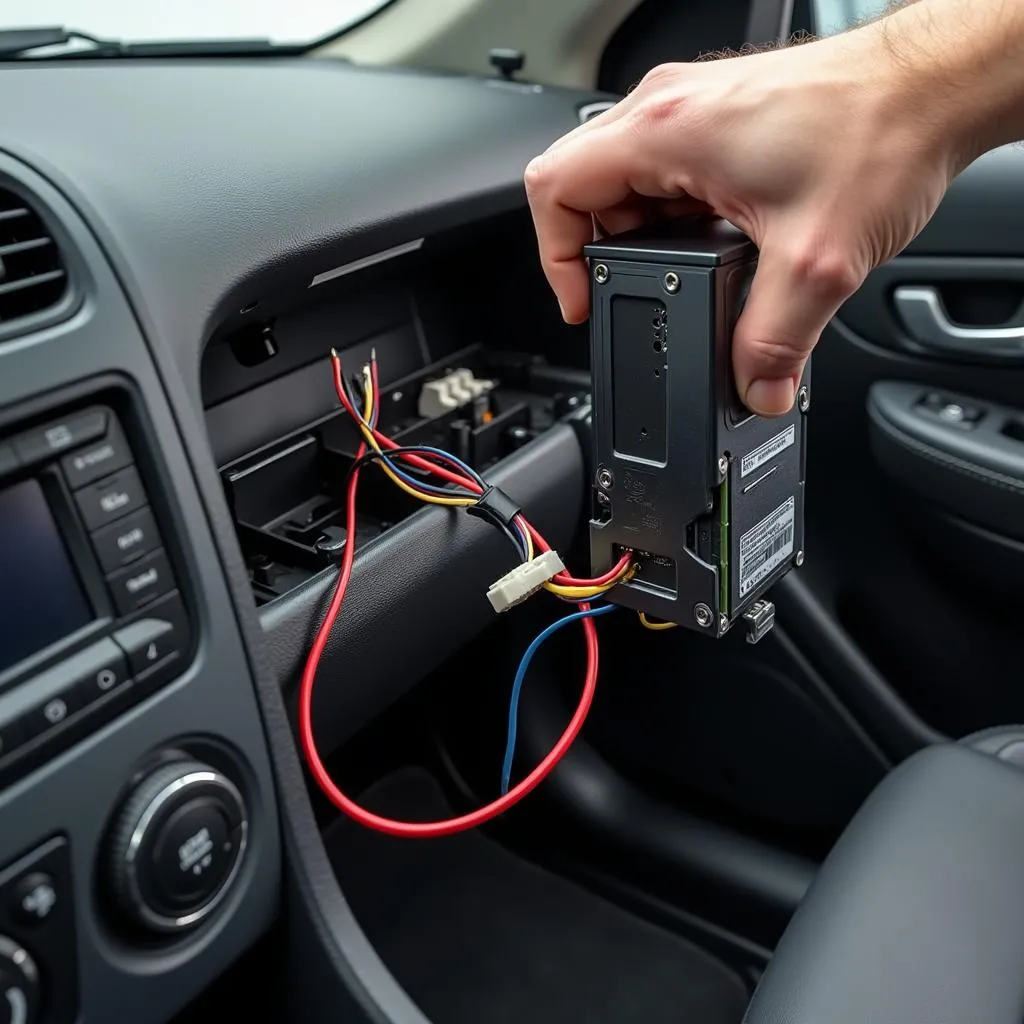Dealing with a malfunctioning aftermarket anti-theft system can be incredibly frustrating. Whether you’re experiencing false alarms, lockout issues, or simply want to regain control of your vehicle’s security, knowing how to disable the system is essential. This comprehensive guide will walk you through the process, providing clear instructions and addressing common concerns.
Understanding Aftermarket Anti-Theft Systems
Before diving into the disabling process, it’s crucial to understand what sets aftermarket anti-theft systems apart. Unlike factory-installed systems, these are added after purchase and often feature varying levels of complexity and installation methods.
Identifying the Problem
Pinpointing the exact issue with your anti-theft system is the first step towards resolution.
Common signs of a malfunctioning system include:
- Frequent false alarms: If your alarm goes off without any legitimate threat, it’s a telltale sign of a problem.
- Inability to start the vehicle: Anti-theft systems are designed to immobilize your car; a fault can prevent engine ignition.
- Erratic behavior: Unusual blinking lights, inconsistent remote responses, and other odd behaviors point toward a potential issue.
Gathering the Necessary Tools
Disabling an aftermarket anti-theft system often requires a few basic tools:
- Screwdrivers (Phillips and flathead): Essential for accessing and removing panels to reach the system’s components.
- Wire strippers/cutters: May be needed for disconnecting wires or splicing into existing connections.
- Multimeter: Useful for testing circuits and continuity to ensure proper disconnection.
- Owner’s manual: Your anti-theft system’s manual provides specific instructions and wiring diagrams.
Disabling the System: A Step-by-Step Guide
Disclaimer: Disabling your anti-theft system may impact your insurance coverage. It’s recommended to consult with your insurance provider beforehand.
- Locate the system’s main unit: This is typically found under the dashboard, beneath the steering column, or behind the glove box.
- Disconnect the battery: For safety, always disconnect the negative battery cable before working on electrical components.
- Identify the wiring harness: The system’s main wiring harness connects it to the vehicle’s electrical system.
- Consult the wiring diagram: Use the owner’s manual or manufacturer’s website to locate the wires related to the starter, ignition, and fuel systems.
- Disable the system: Carefully disconnect or bypass the identified wires according to the instructions specific to your system. In some cases, removing a fuse linked to the anti-theft system might be sufficient.
- Reconnect the battery: After completing the disconnection, reconnect the negative battery cable.
- Test the system: Attempt to start your vehicle and verify if the anti-theft system has been successfully disabled.
 Car anti-theft system installation
Car anti-theft system installation
FAQs About Disabling Aftermarket Anti-theft Systems
Q: Can I disable the system myself or do I need a professional?
A: While it’s possible to disable the system yourself if you possess basic automotive knowledge, seeking professional help is recommended if you’re unsure about the process. Incorrect handling can potentially damage your vehicle’s electrical system.
Q: Will disabling the system void my car’s warranty?
A: It’s unlikely to void your entire warranty, but it might affect coverage for components related to the electrical system. Consulting with your dealer or manufacturer is advisable.
 Mechanic working on car electronics
Mechanic working on car electronics
Q: What are the alternatives to disabling the system?
A: Instead of completely disabling the system, consider having it inspected and repaired by a qualified technician. Resolving the underlying issue is always a safer and more reliable approach. If you’re interested in exploring alternative diagnostic tools, Cardiagtech offers a range of advanced products to help identify and troubleshoot automotive issues.
Conclusion
Disabling an aftermarket anti-theft system can be a viable solution when faced with persistent malfunctions. By following these steps cautiously and understanding the potential risks involved, you can regain control of your vehicle’s security. Remember, if you’re ever unsure about any step of the process, seeking assistance from a qualified automotive electrician is always the safest course of action. For further information on automotive diagnostics and solutions, explore the resources available at CARDIAGTECH.

